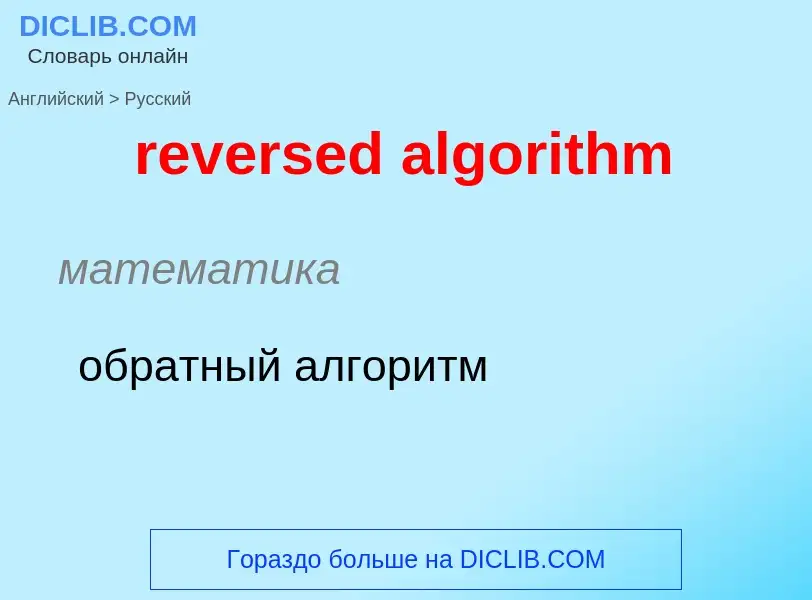Введите слово или словосочетание на любом языке 👆
Язык:
Перевод и анализ слов искусственным интеллектом ChatGPT
На этой странице Вы можете получить подробный анализ слова или словосочетания, произведенный с помощью лучшей на сегодняшний день технологии искусственного интеллекта:
- как употребляется слово
- частота употребления
- используется оно чаще в устной или письменной речи
- варианты перевода слова
- примеры употребления (несколько фраз с переводом)
- этимология
reversed algorithm - перевод на русский
LETTER OF THE LATIN ALPHABET
Ezh reversed; Reversed ezh
reversed algorithm
математика
обратный алгоритм
algorithm
SEQUENCE OF INSTRUCTIONS TO PERFORM A TASK
Algorithmically; Computer algorithm; Properties of algorithms; Algorithim; Algoritmi de Numero Indorum; Algoritmi de numero indorum; Algoritmi De Numero Indorum; Алгоритм; Algorithem; Software logic; Computer algorithms; Encoding Algorithm; Naive algorithm; Naïve algorithm; Algorithm design; Algorithm segment; Algorithmic problem; Algorythm; Rule set; Continuous algorithm; Algorithms; Software-based; Algorithmic method; Algorhthym; Algorthym; Algorhythms; Formalization of algorithms; Mathematical algorithm; Draft:GE8151 Problem Solving and Python Programming; Computational algorithms; Optimization algorithms; Algorithm classification; History of algorithms; Patented algorithms; Algorithmus
algorithm noun math. алгоритм algorithm validation - проверка правильности алгоритма
algorithmic method
SEQUENCE OF INSTRUCTIONS TO PERFORM A TASK
Algorithmically; Computer algorithm; Properties of algorithms; Algorithim; Algoritmi de Numero Indorum; Algoritmi de numero indorum; Algoritmi De Numero Indorum; Алгоритм; Algorithem; Software logic; Computer algorithms; Encoding Algorithm; Naive algorithm; Naïve algorithm; Algorithm design; Algorithm segment; Algorithmic problem; Algorythm; Rule set; Continuous algorithm; Algorithms; Software-based; Algorithmic method; Algorhthym; Algorthym; Algorhythms; Formalization of algorithms; Mathematical algorithm; Draft:GE8151 Problem Solving and Python Programming; Computational algorithms; Optimization algorithms; Algorithm classification; History of algorithms; Patented algorithms; Algorithmus
математика
алгоритмический метод
Википедия
Ƹ
Ƹ (minuscule: ƹ) is a letter of the Latin alphabet. It was used for a voiced pharyngeal fricative, represented in the International Phonetic Alphabet as [ʕ], in the 1940s, 1950s and 1960s, for example by John Rupert Firth and Terence Frederick Mitchell, or in the 1980s by Martin Hinds and El-Said Badawi.
Although it looks like a reversed ezh (Ʒ), it is based on the Arabic letter ʿayn (ع). (Unicode, however, refers to it expressly as "reversed ezh.")


![Alan Turing's statue at [[Bletchley Park]] Alan Turing's statue at [[Bletchley Park]]](https://commons.wikimedia.org/wiki/Special:FilePath/Alan Turing.jpg?width=200)




